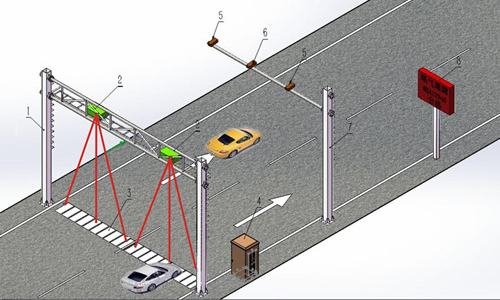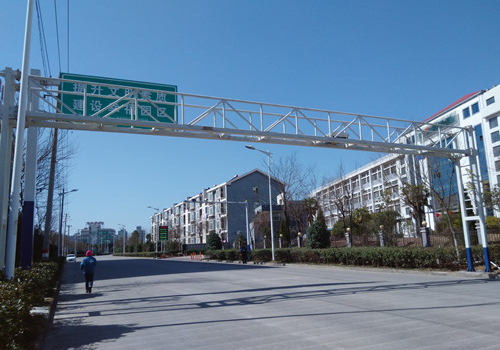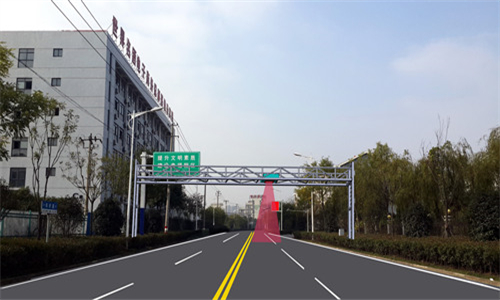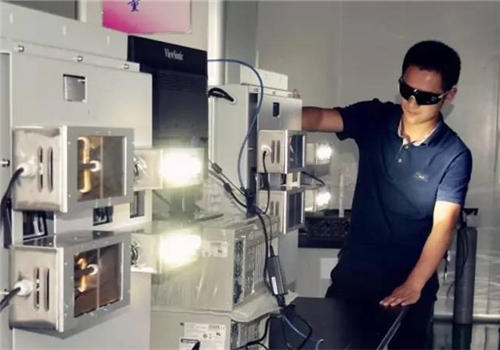Baolong dedicated to vehicle emissions remote sensing for clean air
2017-08-21
When Anhui Baolong Environmental Technology Co Ltd decided to enter the market for remote sensing of vehicle exhaust emissions 13 years ago, it was met with doubts and even a few laughs.
Yet 10 years later, by 2016, Baolong had become the bellwether of the industry, and had single handedly improved the nation's remote sensing of vehicle emissions capacity to a world-standard level.
What is the Baolong story? How did it evolve from new market entrant to world leader in its field?

The principal diagram of the vertical remote sensing system.
Years ago, the common way to test automobile emissions in China was to conduct regular annual inspections at designated places or perform on-road checks with enforcement staff.
These two ways were inefficient. They were unable to ensure top quality measurement results and often incurred wasteful spending in labor and materials.
Baolong's initial solution to the problem was a horizontal vehicle remote sensing system. It uses a special inspection car moving in parallel with the target vehicle in the next lane. Though it took nearly 10 years for the company to develop the system starting from scratch, this method shortened the inspection time for a car to just 0.8 of a second, ramping up daily checks from 100 cars to 2,000.

The test rig is setup for the vertical remote sensing system.
It proved satisfactory for a while, but failed to meet demand as the number of vehicles increased. The inspection car on a lane causes traffic inefficiency.
Baolong then developed a vehicle remote sensing system positioned roadside capable of inspecting passing cars.
The fixed system was both cost and time efficient, but it would require frequent maintenance and would only provide precise monitoring results for only a single car passing by.
How to achieve monitoring cars on multiple lanes simultaneously and reduce maintenance frequency became one central problem blocking reliable vehicle emission sensing.
"Baolong is focused much more on R&D than commercial objectives, an idea burnt so deeply inside of every employee that they are dedicated to innovation night and day," said Wang Bao, the company's general manager.

A principal diagram of the vertical remote sensing system shows how it works.
Wang's team began intense R&D in a vertical remote sensing system which was focused on inspecting cars on multiple lanes in 2014. That research led to Baolong's innovative breakthroughs in many areas, including detectors, reflective materials, circuit design, and even light filter. After two years of arduous efforts, they finally succeeded.
"The vertical system is capable of monitoring all the cars passing through every lane, identifying cars with excessive emissions and even illegal driving related to plate number and size," said Wang.
It can also store and send a car's license plate number it captures to the environmental authority real-time through Internet connection to support further regulation measures.
"At present, only three companies in the world have the core technology. In China, only Baolong has the core technologies with patents. The other two are the US-based Environmental Systems Products and ETC HK," added Wang.

A technician carries out work on the vertical remote sensing system.
The vertical remote sensing system is capable of inspecting exhaust of vehicles on multiple lanes in a fast, automatic and precise manner, while maintaining low maintenance as all detection devices are installed on the gantry.
It is an urgent necessity to assist anti-pollution measures. It will help strengthen inspection of automobile emissions, propel the development of similar technologies and step up the governments’ enforcement and efficiency in environmental protection, an industry expert said.

 Facebook
Facebook WeiXin
WeiXin CONTACT US
CONTACT US










 Tsinghua Holdings works hard for better ecological environment
Tsinghua Holdings works hard for better ecological environment